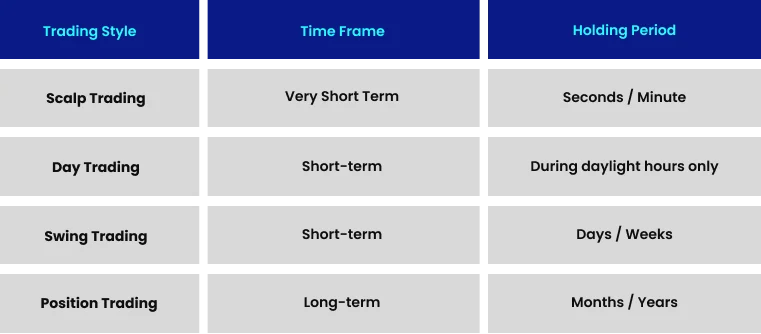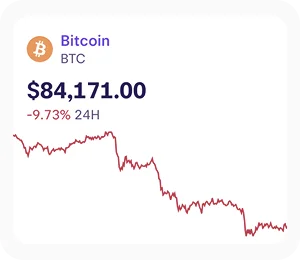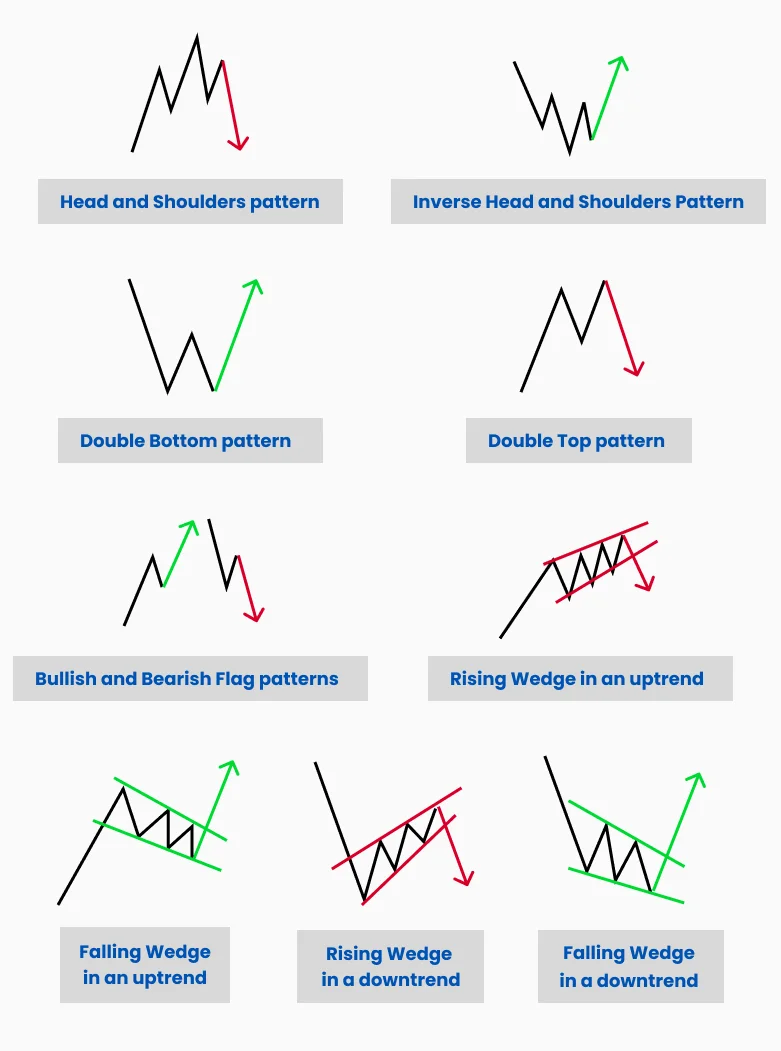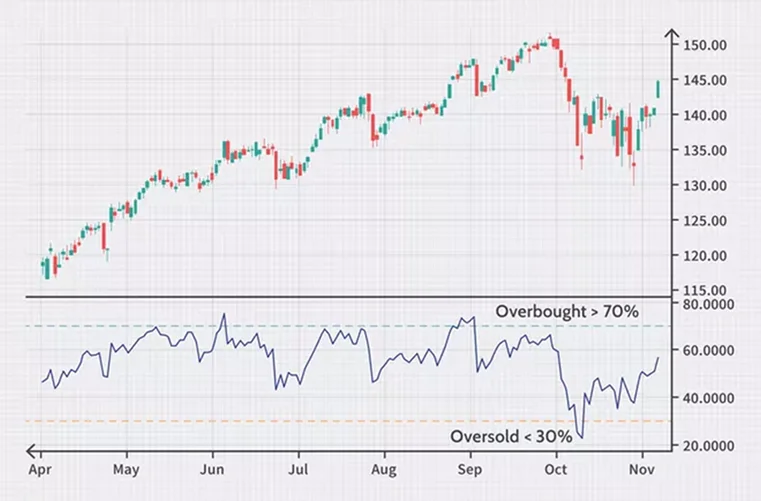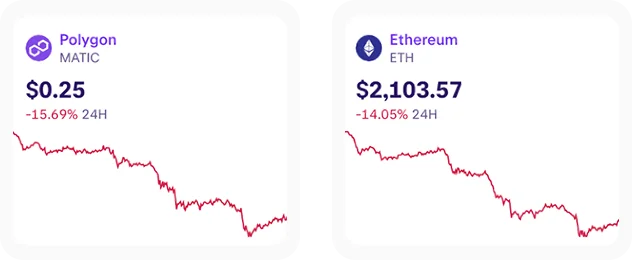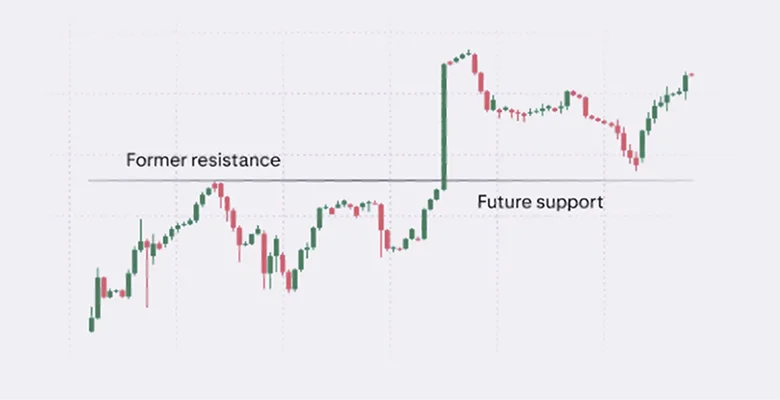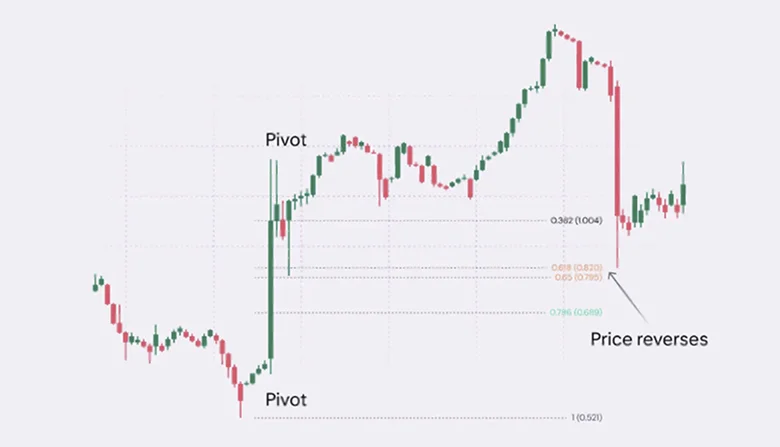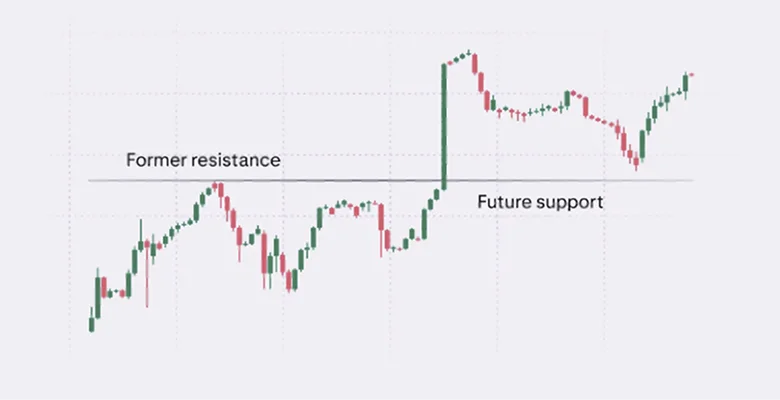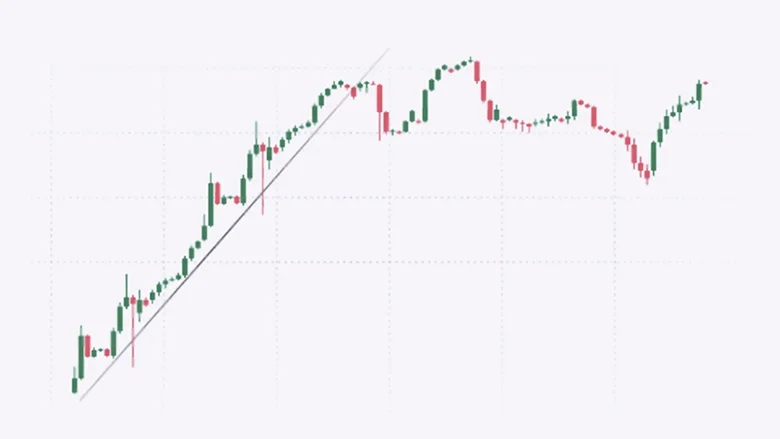
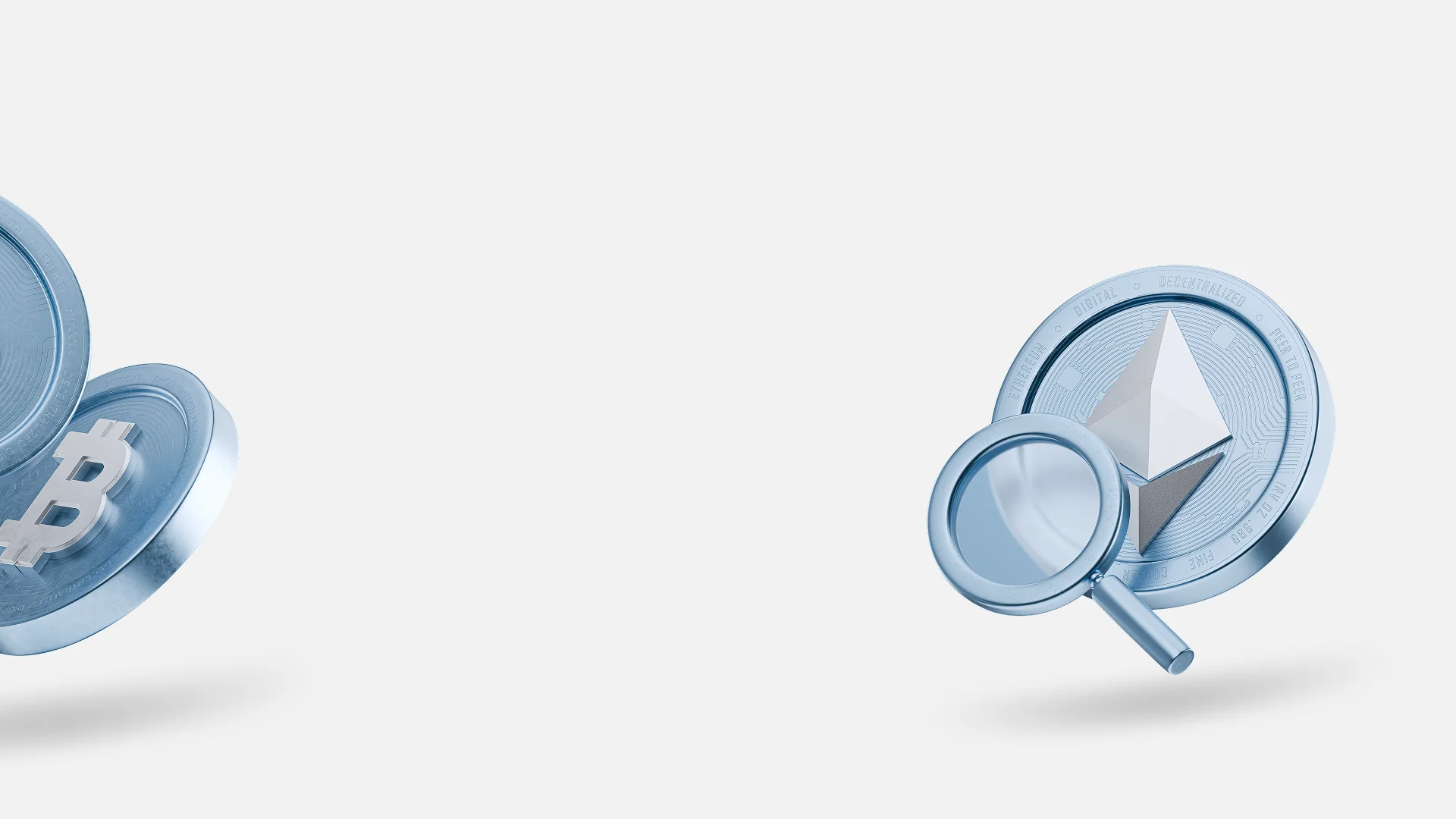
การเทรดคริปโตแบบรายวัน: คู่มือสำหรับผู้เริ่มต้นในการเริ่มต้น
ในโลกของคริปโตเคอเรนซีที่เคลื่อนไหวอย่างรวดเร็ว ซึ่งราคาสามารถพุ่งขึ้นหรือลดลงภายในไม่กี่นาที การเทรดคริปโตแบบรายวัน (day trading) กลายเป็น กลยุทธ์การเทรดรายวันที่ได้รับความนิยม ทั้งในกลุ่มเทรดเดอร์ที่มีประสบการณ์และผู้เริ่มต้นที่มีความมุ่งมั่น แตกต่างจากตลาดแบบดั้งเดิมที่ปิดทำการในแต่ละวัน ตลาดคริปโตเปิดทำการตลอด 24 ชั่วโมง 7 วันต่อสัปดาห์ มอบโอกาสและความเสี่ยงอย่างต่อเนื่องสำหรับผู้ที่พร้อมจะตัดสินใจอย่างรวดเร็ว การเทรดคริปโตแบบรายวันเป็นรูปแบบการเทรดที่ต้องใช้ความทุ่มเทสูง ต้องการการตัดสินใจที่เฉียบคม การบริหารความเสี่ยงอย่างมีวินัย และความเข้าใจเครื่องมืออย่างตัวชี้วัด MACD และ RSI แม้ว่าจะมีโอกาสทำกำไรในระยะสั้นได้จริง แต่ก็มีความท้าทายเช่นกัน ตั้งแต่ความผันผวนของราคาไปจนถึงแรงกดดันทางอารมณ์ คู่มือนี้จะอธิบายวิธีการเทรดคริปโตอย่างมีประสิทธิภาพ เราจะสำรวจหลักการพื้นฐาน กลยุทธ์การเทรดรายวัน เครื่องมือ และความเสี่ยงที่เกี่ยวข้อง เพื่อให้คุณมีความเข้าใจอย่างชัดเจนเกี่ยวกับสิ่งที่จำเป็นในการดำเนินการในตลาดที่มีความเข้มข้นสูงนี้
การเทรด Crypto Day Trading คืออะไร?
Crypto day trading คือการเปิดและปิดการเทรดภายในระยะเวลา 24 ชั่วโมงเดียวกัน—ซึ่งมักเรียกว่าการเทรดแบบ intraday ซึ่งแตกต่างจากสไตล์การเทรดอื่น ๆ เช่น การเทรดสปอต (spot trading), การเทรดสวิง (swing trading), หรือการเทรดแบบถือสถานะ (position trading) ที่ถือสถานะนานกว่า เทรดเดอร์แบบ day trading มักจะทำงานบนแพลตฟอร์มเทรดแบบรวมศูนย์ (centralized exchanges) โดยดำเนินการเทรดหลายรายการอย่างรวดเร็ว—บางครั้งมากถึงยี่สิบรายการหรือมากกว่านั้นในหนึ่งวัน—เพื่อทำกำไรจากความผันผวนของราคาที่เล็กและระยะสั้น
สิ่งสำคัญคือต้องเข้าใจว่า’การเทรดแบบ day trading ไม่ใช่กลยุทธ์เดียวแต่เป็นแนวทางการเทรดที่อิงตามช่วงเวลา เทรดเดอร์จะใช้เทคนิคเช่น scalping หรือใช้เครื่องมือจาก การวิเคราะห์ทางเทคนิค (technical analysis) แต่สิ่งที่จำแนกการเทรดว่าเป็น "day trade" คือระยะเวลาของการเทรด—โดยการเข้าและออกสถานะจะเกิดขึ้นภายในวันเดียวกัน
นี่คือการเปรียบเทียบการเทรดแบบ day trading กับสไตล์การเทรดทั่วไปอื่น ๆ:
รูปที่ 1: แสดงการเทรดแบบ day trading เทียบกับสไตล์การเทรดอื่นๆ
ตลาดคริปโตเคอร์เรนซีทำงานอย่างต่อเนื่อง แตกต่างจากตลาดหุ้นแบบดั้งเดิมที่มีช่วงเวลาการซื้อขายตามภูมิภาคและปิดทำการในวันหยุดสุดสัปดาห์ ดังนั้นการเทรดแบบ day trade ในคริปโตจึงถือเป็นการเทรดที่ปิดสถานะภายใน 24 ชั่วโมง หลายเทรดเดอร์ใช้เวลามาตรฐานสากล (Coordinated Universal Time - UTC) เป็นจุดอ้างอิงสำหรับการเปิดและปิดวันเทรด
วิธีการเลือกคริปโตเคอร์เรนซีสำหรับการเทรดแบบ Day Trading
การเลือกสินทรัพย์คริปโตเคอร์เรนซีสำหรับการเทรดแบบ day trading ไม่ควรเป็นการสุ่ม เทรดเดอร์ที่ประสบความสำเร็จมักจะเน้นไปที่สินทรัพย์ที่มีคุณสมบัติตรงตามเกณฑ์เฉพาะ:
ความรู้เชิงลึก: เลือกคริปโตเคอร์เรนซีที่คุณได้ศึกษามาอย่างละเอียดในช่วงเวลาที่นาน รวมถึงการทดสอบย้อนหลัง (backtesting) กลยุทธ์ของคุณเพื่อประเมินความเหมาะสมกับแนวทางการเทรดของคุณ
ความสอดคล้องระหว่างบุคลิกภาพและแผนการเทรด: เลือกสินทรัพย์ที่สอดคล้องกับบุคลิกภาพและแผนการเทรดของคุณ บางคริปโตเคอร์เรนซีมีความผันผวนสูงและมีปริมาณการเทรดมาก ในขณะที่บางตัวเคลื่อนไหวในแนวโน้มที่ช้ากว่าและยาวกว่า การเลือกของคุณควรสะท้อนถึงความสามารถในการรับความเสี่ยงและสไตล์การเทรดของคุณ
การสนับสนุนจากแพลตฟอร์ม: ตรวจสอบให้แน่ใจว่าคริปโตเคอร์เรนซีที่คุณเลือกได้รับการสนับสนุนจากแพลตฟอร์มการเทรดที่คุณใช้งานและมีสภาพคล่องเพียงพอสำหรับขนาดการเทรดที่คุณตั้งใจจะทำ
เทรดเดอร์แบบ day trading ที่ประสบความสำเร็จส่วนใหญ่จะพัฒนาความเชี่ยวชาญลึกซึ้งในคู่สกุลเงินคริปโตเคอร์เรนซีจำนวนจำกัด แทนที่จะกระจายความสนใจไปยังสินทรัพย์หลายตัว วิธีการนี้ช่วยให้เข้าใจพฤติกรรมตลาดเฉพาะเจาะจงได้ดียิ่งขึ้น
ตัวอย่าง Crypto Day Trading: การวิเคราะห์ทีละขั้นตอน
เพื่อแสดงให้เห็นว่า crypto day trading ทำงานอย่างไรในทางปฏิบัติ ให้พิจารณาสถานการณ์ดังต่อไปนี้:
หลังจากวิเคราะห์ตลาดคริปโตเคอร์เรนซีหลายแห่งเพื่อหาโอกาส เทรดเดอร์พบการตั้งค่าที่น่าสนใจบนกราฟราคา Bitcoin ช่วงเวลา 5 นาที Bitcoin กำลังอยู่ในแนวโน้มขาลงและกำลังเข้าใกล้ระดับจิตวิทยาที่สำคัญที่ $50,000
รูปที่ 2: กราฟ Bitcoin ช่วงเวลา 5 นาที แสดงแนวโน้มขาลงที่กำลังเข้าใกล้ระดับแนวรับทางจิตวิทยาที่ $50,000
เทรดเดอร์พัฒนาความคิดการเทรดโดยมีความคาดหวังเชิงบวกจากการทดสอบย้อนหลังอย่างละเอียด การวิเคราะห์ทางสถิติ และข้อมูลจากสมุดบันทึกการเทรด การวิเคราะห์ของพวกเขาชี้ให้เห็นว่ามีความน่าจะเป็นสูงที่ราคาของ Bitcoin จะเด้งกลับเมื่อถึงระดับ $50,000
เทรดเดอร์ตัดสินใจที่จะ:
วางคำสั่งซื้อแบบลิมิต (limit order) เพื่อซื้อ Bitcoin จำนวน 1 เหรียญที่ราคา $50,000
ตั้งคำสั่งหยุดขาดทุน (stop-loss order) ที่ราคา $49,900 เพื่อจำกัดการขาดทุนหากราคายังคงลดลง
วางคำสั่งทำกำไร (take-profit order) ที่ราคา $50,200
หลังจากคำนวณกำไรและขาดทุนที่เป็นไปได้ เทรดเดอร์กำหนดอัตราส่วนความเสี่ยงต่อผลตอบแทนที่ 2:1— โดยกำไรที่ตั้งไว้ ($200) เป็นสองเท่าของขาดทุนที่อาจเกิดขึ้น ($100) ก่อนหักค่าธรรมเนียมการทำธุรกรรม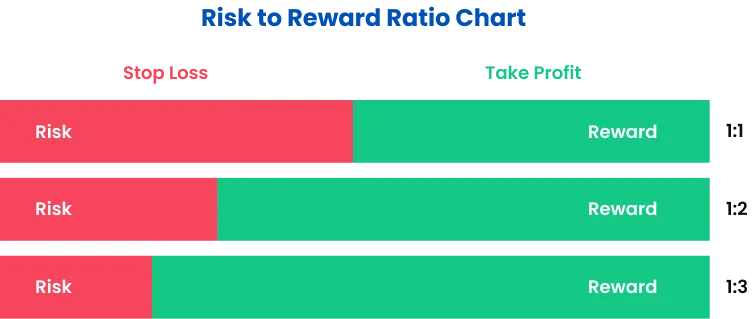
รูปที่ 3: แสดงภาพการตั้งค่าระดับ stop-loss, take-profit และอัตราส่วนความเสี่ยงต่อผลตอบแทน
ตามที่คาดไว้ ราคาของ Bitcoin ลดลงถึง $50,000 และคำสั่งซื้อแบบลิมิตของเทรดเดอร์ถูกดำเนินการ อย่างไรก็ตาม ตรงกันข้ามกับความคาดหวังของเทรดเดอร์ ตลาดกลับลดลงต่อเนื่อง เมื่อราคาต่ำกว่า $49,900 คำสั่งหยุดขาดทุนจะถูกเรียกใช้ ทำให้เกิดการขาดทุน $100
แม้ว่าผลลัพธ์จะไม่สำเร็จ เทรดเดอร์ตระหนักว่าพวกเขาได้ดำเนินแผนอย่างถูกต้องและเข้าใจว่าการขาดทุนเป็นส่วนหนึ่งที่หลีกเลี่ยงไม่ได้ของกระบวนการเทรด โดยสถิติแล้ว การขาดทุนเกิดขึ้นในสัดส่วนที่สำคัญ และการเทรดที่ขาดทุนแต่ละครั้งไม่ได้ทำให้ความได้เปรียบ (edge) ของเทรดเดอร์' "ซึ่งคือความสามารถในการระบุและใช้ประโยชน์จากเหตุการณ์ตลาดที่ไม่สุ่ม"—สูญเสียไป
การเทรด Crypto แบบ Day Trading เหมาะสำหรับมือใหม่หรือไม่?
เทรดเดอร์มืออาชีพส่วนใหญ่แนะนำอย่างยิ่งให้มือใหม่หลีกเลี่ยงการเทรดแบบ day trading และข้อกังวลนี้ได้รับการสนับสนุนด้วยหลักฐานที่น่าเชื่อถือ:
ความจริงที่โหดร้ายคือ เทรดเดอร์แบบ day trading ส่วนใหญ่สูญเสียเงิน โดยมีอัตราความล้มเหลวที่มักถูกอ้างถึงสูงถึง 95% หรือมากกว่า งานวิจัยบางชิ้นชี้ให้เห็นว่าตัวเลขจริงอาจน่าผิดหวังยิ่งกว่านั้น
ผลการศึกษาสำคัญจากการวิจัยเทรดเดอร์แบบ day trading ในตลาดแบบดั้งเดิมเผยว่า:
80% ของเทรดเดอร์เลิกทำการเทรดภายในสองปีแรก
จากหลายการศึกษา พบว่าเกิน 90% ของเทรดเดอร์แบบ day trading สูญเสียเงินลงทุนทั้งหมด
การศึกษาหนึ่งพบว่าเพียง 1% ของเทรดเดอร์แบบ day trading เท่านั้นที่ยังคงมีกำไรหลังหักค่าธรรมเนียมการเทรด
อีกการศึกษาหนึ่งสรุปว่า "แทบจะเป็นไปไม่ได้เลยที่บุคคลจะสามารถเทรดแบบ day trading เพื่อเป็นรายได้หลักได้ ตรงข้ามกับที่ผู้เชี่ยวชาญโบรกเกอร์และผู้ให้บริการคอร์สต่างๆ มักอ้าง"
สถิติเหล่านี้ควรทำให้ผู้ที่กำลังพิจารณาเทรด crypto แบบ day trading โดยเฉพาะมือใหม่ที่มีประสบการณ์ตลาดและทุนจำกัดต้องหยุดคิด
ทำไมการเทรด Crypto แบบ Day Trading จึงถือว่ายาก?
ปัจจัยหลายประการส่งผลให้การเทรดแบบ day trading ในสินทรัพย์คริปโตเคอร์เรนซีมีความยากเป็นพิเศษ ทำให้ยากกว่าการเทรดในกรอบเวลาที่สูงขึ้นหรือการลงทุนระยะยาวอย่างมาก:
ความผันผวนของตลาดที่สูงมาก: ตลาดคริปโตเคอร์เรนซีมีความผันผวนของราคาที่รุนแรงในช่วงเวลาสั้น ๆ สร้างโอกาสและความเสี่ยงที่สำคัญ
การตัดสินใจแบบเรียลไทม์: การเทรดแบบ day trading ต้องการความว่องไวทางจิตใจอย่างยิ่งในการตัดสินใจอย่างรวดเร็วภายใต้ความกดดัน—ซึ่งเป็นทักษะทางปัญญาที่เทรดเดอร์หลายคนประสบปัญหาในการพัฒนาอย่างสม่ำเสมอ
ผลกระทบจากค่าธรรมเนียม: ความถี่ในการเทรดแบบ day trading ทำให้เกิดค่าธรรมเนียมการทำธุรกรรมสะสมสูง ค่าใช้จ่ายเหล่านี้อาจเป็นตัวแปรที่ทำให้กำไรเล็กน้อยกลายเป็นขาดทุนอย่างต่อเนื่อง
ความต้องการทางจิตวิทยา: ในทุกวิธีการเข้าร่วมตลาดการเงิน การเทรดแบบ day trading เป็นวิธีที่สร้างความกดดันทางจิตใจสูงสุด เทรดเดอร์ที่ประสบความสำเร็จต้องมีความชำนาญสูงในการยอมรับการขาดทุนอย่างรวดเร็วและเดินหน้าต่อไปโดยไม่แบกภาระทางอารมณ์—ซึ่งเป็นทักษะทางจิตวิทยาที่เทรดเดอร์มือใหม่หลายคนแทบจะไม่สามารถฝึกฝนได้
คำถามสำคัญ: คุณจะลงทุนในบริษัทโดยไม่ตรวจสอบความสามารถในการทำกำไรหรือผลตอบแทนการลงทุนที่คาดหวังหรือไม่? หากคุณไม่ทำเช่นนั้น ทำไมคุณจึงจะเข้าหาการเทรดแบบ day trading แตกต่างออกไป? ก่อนเสี่ยงทุน คุณควรมีหลักฐานที่แสดงถึงศักยภาพในการทำกำไรของคุณภายใต้เงื่อนไขการเทรดแบบ day trading
การเป็นเทรดเดอร์ที่ทำกำไรได้อย่างสม่ำเสมออาจต้องใช้เวลาหลายปีของความพากเพียรและความมุ่งมั่น—ดังที่แสดงโดยเทรดเดอร์ที่ประสบความสำเร็จหลายรายในซีรีส์หนังสือชื่อดัง 'Market Wizards" โดย Jack Schwager
ทักษะที่จำเป็นสำหรับการเทรด Crypto แบบ Day Trading
แม้จะไม่มีสูตรสำเร็จเดียวสำหรับการเทรดคริปโตแบบ day trading ที่ประสบความสำเร็จ ตลาดคริปโตเปิดโอกาสให้มีเสรีภาพและความคิดสร้างสรรค์ไม่จำกัด—ซึ่งเป็นลักษณะที่สร้างทั้งโอกาสและความเสี่ยง
ในหนังสือที่มีอิทธิพล "Trading in the Zone" มาร์ค ดักลาส อธิบายว่าตลาดเปิดโอกาสให้มีเสรีภาพในการสร้างสรรค์ซึ่งแทบไม่เคยพบในด้านอื่นของชีวิต เสรีภาพนี้ทำให้เทรดเดอร์สามารถรับความเสี่ยงสูงมากพร้อมผลลัพธ์ที่อาจทำลายล้างได้
ไดนามิกนี้อธิบายว่าทำไมเทรดเดอร์จึงสามารถประสบกับกำไรและขาดทุนอย่างรุนแรงในระยะสั้น ในขณะที่พบว่าการรักษากำไรระยะยาวเป็นเรื่องยากมาก
เทรดเดอร์ที่มีประสบการณ์หลายคนเชื่อว่าการเทรด crypto แบบ day trading ที่ประสบความสำเร็จต้องการสิ่งต่อไปนี้:
การตระหนักรู้ในตนเองเพื่อพัฒนากลยุทธ์ที่สอดคล้องกับบุคลิกภาพของคุณ
ความชำนาญในพื้นฐานการเทรด รวมถึงการวิเคราะห์ทางเทคนิค การทดสอบย้อนหลัง และการบริหารความเสี่ยง
มาดูทักษะสำคัญเหล่านี้อย่างละเอียดมากขึ้น
การอ่านกราฟและตัวชี้วัดทางเทคนิค
แม้นักวิชาการจะถกเถียงกันมานานเกี่ยวกับลักษณะสุ่มของตลาด (ดู "ทฤษฎี Random Walk") เทรดเดอร์หลายคนทำงานบนสมมติฐานว่าตลาดแสดงรูปแบบที่สามารถเทรดซ้ำได้
การวิเคราะห์กราฟมีวิธีการมากมาย มีตัวชี้วัด อัลกอริทึม และกลยุทธ์นับพัน เทรดเดอร์ที่มีประสบการณ์ส่วนใหญ่จะวิเคราะห์การเคลื่อนไหวของราคา (price action) โดยใช้กราฟแท่งเทียน ซึ่งแสดงภาพการเคลื่อนไหวของราคาภายในช่วงเวลาที่กำหนด
รูปที่ 4: รูปแบบแท่งเทียนทั่วไปที่เทรดเดอร์แบบ day trading ใช้เพื่อระบุการกลับตัวและการต่อเนื่องของตลาด
การวิเคราะห์ทางเทคนิคช่วยให้เทรดเดอร์ระบุแนวโน้มและรูปแบบบนกราฟคริปโตเคอร์เรนซี ซึ่งอาจเผยให้เห็นความรู้สึกโดยรวมของตลาดและช่วยให้ตัดสินใจได้อย่างมีข้อมูลมากขึ้น
รูปที่ 5: ตัวอย่างการวิเคราะห์ทางเทคนิคที่ใช้กับกราฟคริปโตเคอร์เรนซี แสดงค่าเฉลี่ยเคลื่อนที่ (moving averages), RSI และตัวชี้วัดปริมาณการซื้อขาย (volume indicators)
การเลือกกรอบเวลาการเทรดที่เหมาะสม
เทรดเดอร์ crypto แบบ day trading มักเน้นกรอบเวลาที่ต่ำกว่า เช่น กราฟรายชั่วโมง (ซึ่งแสดงการเคลื่อนไหวของราคาภายในหนึ่งชั่วโมง) หรือกรอบเวลาสั้นสุดถึงแท่งเทียน 1 นาที วิธีนี้ช่วยให้เทรดเดอร์สามารถทำกำไรจากความผันผวนเล็ก ๆ ของตลาดในช่วงเวลาสั้น ๆ ได้
เทรดเดอร์หลายคนยังใช้ข้อมูลจากกรอบเวลาที่สูงกว่า เช่น กราฟรายวันหรือรายสัปดาห์ เพื่อสนับสนุนการตัดสินใจในกรอบเวลาที่ต่ำกว่า ตัวอย่างเช่น หาก Polygon (MATIC) หรือ Ethereum (ETH) กำลังมีแนวโน้มขาขึ้นในกรอบเวลารายวัน การเทรดที่สอดคล้องกับแนวโน้มนี้ในกรอบเวลาที่ต่ำกว่าอาจมีโอกาสประสบความสำเร็จสูงกว่า
การชำนาญในการวางคำสั่ง
ตลาดการเงินใช้ประเภทคำสั่งหลายแบบ แต่เทรดเดอร์ crypto แบบ day trading มักพึ่งพาคำสั่งหลักสองประเภทที่มีในแพลตฟอร์มเทรดแบบรวมศูนย์:
คำสั่งลิมิต (Limit Orders): คำสั่งแบบพาสซีฟหรือ "resting" ที่รอการเติมเต็มที่ราคาที่กำหนด เช่น เทรดเดอร์อาจสั่งซื้อ Bitcoin จำนวน 1 เหรียญที่ราคา $50,000 คำสั่งนี้จะดำเนินการเมื่อราคา Bitcoin ถึงระดับนั้นและมีผู้ขายยอมรับคำสั่ง คำสั่งลิมิตช่วยเพิ่มสภาพคล่องให้ตลาดโดยทำให้สินทรัพย์พร้อมสำหรับการเทรด หนังสือคำสั่งซื้อขาย (order book) แสดงคำสั่งลิมิตทั้งหมดที่ประกอบเป็นตลาดนั้น
คำสั่งตลาด (Market Orders): คำสั่งแบบแอคทีฟที่ "take" คำสั่งที่มีอยู่ในหนังสือคำสั่ง ตัวอย่างเช่น หากเทรดเดอร์ต้องการซื้อ Bitcoin อย่างรวดเร็วที่ประมาณ $50,000 โดยไม่รอราคาที่แน่นอน พวกเขาอาจใช้คำสั่งตลาดเพื่อซื้อทันทีที่ราคา $50,500 แพลตฟอร์มจะเติมคำสั่งนี้โดยใช้คำสั่งขายที่ใกล้เคียงที่สุด ซึ่งอาจทำให้ราคาที่เข้าซื้อไม่ดีเท่าที่ตั้งใจ— ปรากฏการณ์นี้เรียกว่า "slippage"
แนวคิดนี้อธิบายว่าทำไมคำสั่งหยุดขาดทุน (stop-loss) ซึ่งเป็นคำสั่งตลาดที่ตั้งไว้ล่วงหน้าเพื่อปิดสถานะ อาจถูกดำเนินการที่ราคาที่แตกต่างอย่างมากจากระดับที่ตั้งใจไว้ หรืออาจไม่ถูกดำเนินการเลยก็ได้ ไม่มีแพลตฟอร์มใดรับประกันการออกจากสถานะที่ราคาที่คุณต้องการได้
การบริหารความเสี่ยงในการเทรด Crypto แบบ Day Trading
การบริหารความเสี่ยง— คือการกำหนดจำนวนเงินทุนที่เสี่ยงในแต่ละการเทรดเพื่อจำกัด "ความเสี่ยงที่จะล้มละลาย (risk of ruin)" หรือการสูญเสียเงินทุนทั้งหมด— ซึ่งถือเป็นปัจจัยสำคัญที่สุดของการเทรดที่ประสบความสำเร็จ
ความเสี่ยงที่จะล้มละลายหมายถึงความน่าจะเป็นที่จะสูญเสียเงินทุนจนไม่สามารถฟื้นตัวได้ หรือจำเป็นต้องเลิกกิจกรรมการเทรด ในชุมชนคริปโตเคอร์เรนซี ผลลัพธ์ที่เลวร้ายนี้มักถูกเรียกเล่น ๆ ว่า "getting rekt"
มีเครื่องมือออนไลน์ฟรีมากมายที่ช่วยให้เทรดเดอร์คำนวณความเสี่ยงที่จะล้มละลายตามพารามิเตอร์การเทรดของตน
เพื่อจำกัดความเสี่ยง เทรดเดอร์หลายคน:
ตั้งคำสั่งหยุดขาดทุนในทุกการเทรดเพื่อจำกัดการขาดทุนที่อาจเกิดขึ้น
ไม่ลงทุนเกินกว่าที่สามารถรับความเสี่ยงได้
ทำการวิเคราะห์อย่างละเอียดในทุกคริปโตเคอร์เรนซีที่ต้องการลงทุนก่อนที่จะลงเงินจริง
รูปที่ 5: ตัวอย่างการวิเคราะห์ทางเทคนิคที่ใช้กับกราฟคริปโตเคอร์เรนซี แสดงค่าเฉลี่ยเคลื่อนที่ (moving averages), RSI และตัวชี้วัดปริมาณการซื้อขาย (volume indicators)
5 กลยุทธ์ Day Trading Crypto สำหรับมือใหม่
แม้ว่ากลยุทธ์ต่อไปนี้จะใช้ได้กับทุกกรอบเวลา แต่เป็นที่นิยมอย่างมากในกลุ่มเทรดเดอร์แบบ day trading ที่มองหาโอกาสระยะสั้น
1. กลยุทธ์เทรดตามช่วงราคา (Range-Based Trading Strategy)
ตลาดมักแสดงพฤติกรรมสองแบบ คือ การเทรนด์ (ขึ้นหรือลง) หรือ การเคลื่อนไหวในช่วงแคบ (rangebound) แนวโน้มที่แข็งแกร่งมักชะลอตัวลงกลายเป็นช่วงแคบหรือการรวมตัวของราคา
เทรดเดอร์หลายคนเชี่ยวชาญการเทรดในช่วงรวมตัวนี้โดยรอให้ราคาถึงขอบเขตสูงสุดหรือต่ำสุดของช่วง—ซึ่งเป็นแนวต้านหรือแนวรับ
ราคาคริปโตเคอร์เรนซีมักจะ "สวิง (sweep)" หรือ "เบี่ยงเบน (deviate)" ออกจากขอบเขตของช่วง' ก่อนที่จะกลับเข้ามาภายในช่วงอีกครั้ง ลำดับการเคลื่อนไหวของราคานี้เกิดขึ้นบ่อยครั้งเนื่องจากเทรดเดอร์ถูกจับได้ไม่ทัน โดยถือสถานะขาดทุนหลังจากราคาชั่วคราวออกนอกช่วง เทรดเดอร์ในช่วงราคามักตั้งเป้าหมายที่รูปแบบเบี่ยงเบนเหล่านี้เพื่อหาโอกาสเข้าเทรด
รูปที่ 6: ตัวอย่างการเทรดช่วงราคา แสดงการรวมตัวของราคาระหว่างระดับแนวรับและแนวต้าน พร้อมจุดเข้าเทรดที่ขอบเขตของช่วง
2. Fibonacci Retracement สำหรับการเทรด Crypto แบบ Day Trading
เทรดเดอร์คริปโตหลายคนใช้เครื่องมือ Fibonacci retracement (ซึ่งได้มาจากลำดับ Fibonacci) เพื่อระบุโซนที่อาจเกิดการกลับตัวบนกราฟราคา โดยการทำเครื่องหมายจุดสูงสุดและต่ำสุดที่สำคัญ เทรดเดอร์สามารถวางระดับ Fibonacci retracement เพื่อเน้นพื้นที่ที่ตลาดอาจเปลี่ยนทิศทาง
ระดับ retracement ที่ใช้บ่อยที่สุดคือ 23.6%, 38.2%, 61.8% และ 78.6% โดยเทรดเดอร์หลายคนให้ความสนใจเป็นพิเศษกับระดับ "อัตราส่วนทองคำ (golden ratio)" ที่ 61.8%
รูปที่ 7: ระดับ Fibonacci retracement ที่ใช้กับกราฟ Bitcoin แสดงโซนที่อาจเกิดการกลับตัวที่ระดับ Fibonacci สำคัญ
3. โอกาส Arbitrage ในตลาด Crypto
Arbitrage ในคริปโตคือการใช้ประโยชน์จากความแตกต่างของราคาสินทรัพย์ดิจิทัลเดียวกันในแพลตฟอร์มเทรดคริปโตต่าง ๆ แตกต่างจากกลยุทธ์ที่อิงกับการเคลื่อนไหวของราคา arbitrage ต้องการการติดตามราคาของสินทรัพย์ในหลายตลาดพร้อมกัน
ตัวอย่างเช่น หาก Solana (SOL) ซื้อขายที่ $100 ใน Exchange A แต่ที่ $120 ใน Exchange B เทรดเดอร์ที่มีเงินทุนใน Exchange A สามารถซื้อ Solana แล้วโอนไปยัง Exchange B และขายที่นั่น—เพื่อทำกำไรหลังหักค่าธรรมเนียมการโอนและการทำธุรกรรม
แม้แนวคิดจะดูง่าย แต่การทำ arbitrage ให้สำเร็จต้องเผชิญกับความท้าทายหลายประการ เช่น เวลาการโอนเงิน ข้อจำกัดในการถอน และความเปลี่ยนแปลงของความแตกต่างราคาที่รวดเร็ว
4. กลยุทธ์ Support and Resistance Flip
สุภาษิตการเทรดที่ว่า "แนวต้านเดิมกลายเป็นแนวรับในอนาคต" หมายความว่าหลังจากราคาคริปโตเคอร์เรนซีทะลุผ่านระดับสำคัญนั้นแล้ว ระดับนั้นสามารถกลายเป็นแนวรับ—อย่างน้อยจนกว่าความรู้สึกตลาดจะเปลี่ยนอีกครั้ง
ปรากฏการณ์นี้สร้างโอกาสให้เทรดเดอร์แบบ day trading ราคามักจะทดสอบระดับนั้นซ้ำ ๆ ก่อนที่จะทะลุผ่าน หลังจาก breakout ราคามักจะกลับมาทดสอบแนวต้านเดิมในฐานะแนวรับใหม่ สร้างรูปแบบกลับตัวที่เรียกว่า "S/R Flip" เนื่องจากการเปลี่ยนแปลงจากแนวต้านเป็นแนวรับ
เทรดเดอร์หลายคนถือว่าโซน S/R flip เหล่านี้เป็นการตั้งค่าการเทรดที่มีโอกาสสำเร็จสูงสุดในตลาดคริปโตเคอร์เรนซี
รูปที่ 8: ตัวอย่าง Support and Resistance Flip บนกราฟ Ethereum แสดงให้เห็นว่าแนวต้านเดิมกลายเป็นแนวรับหลังจาก breakout
5. การเทรดตามเส้นแนวโน้มและโมเมนตัม
กลยุทธ์เทรนด์มักมุ่งหวังที่จะทำกำไรจากแนวโน้มตลาดที่ชัดเจน โดยจับส่วนสำคัญของการเคลื่อนไหวของราคา การใช้เส้นแนวโน้มบนกราฟราคาและ price action เป็นวิธีทั่วไปในการกำหนดพารามิเตอร์ความเสี่ยงและผลตอบแทนสำหรับการตั้งค่าการเทรด
เทรดเดอร์แนวโน้มมักใช้วลีว่า "the trend is your friend" ซึ่งหมายความว่าการเทรดตามทิศทางตลาดที่มีอยู่โดยทั่วไปมักให้โอกาสสำเร็จสูงกว่าการเทรดสวนทางแนวโน้ม
รูปที่ 9: ตัวอย่างการเทรดตามแนวโน้ม แสดงแนวโน้มขาขึ้นของ Bitcoin พร้อมจุดเข้าเทรดหลายจุดตามเส้นแนวโน้มที่ขึ้น
ข้อดีและข้อเสียของการเทรด Crypto แบบ Day Trading
ข้อดีของการเทรด Crypto แบบ Day Trading
ตารางเวลาที่มีโครงสร้าง: การเทรดแบบ day trading ช่วยให้ผู้ปฏิบัติสามารถมุ่งเน้นกิจกรรมการเทรดในช่วงเวลาที่กำหนด คล้ายกับตารางเวลาทำงานแบบปกติ โครงสร้างนี้อาจดึงดูดผู้ที่มีภาระผูกพันกับครอบครัวหรือหน้าที่อื่นๆ
ศักยภาพในการเติบโตของบัญชีอย่างรวดเร็ว: เทรดเดอร์ที่มีทักษะสามารถเพิ่มขนาดบัญชีได้อย่างรวดเร็วผ่านการเทรดหลายรายการต่อวัน เมื่อรวมกับผลของการทบต้น วิธีการเทรดความถี่สูงนี้ช่วยให้บัญชีเติบโตแบบทวีคูณเมื่อทำได้สำเร็จ
ข้อเสียของการเทรด Crypto แบบ Day Trading
ความเครียดทางจิตใจ: หลายคนพบว่าการดำเนินการและจัดการหลายการเทรดภายในวันเดียวเป็นเรื่องที่เครียดมาก นำไปสู่ความเหนื่อยล้าจากการตัดสินใจและอาจเกิดภาวะหมดไฟ
ความต้องการทางจิตใจและร่างกาย: การเทรดแบบ day trading ต้องการสมาธิอย่างเข้มข้นและต่อเนื่องในหลายตัวแปร (มักจะบนหลายหน้าจอ) ซึ่งอาจสร้างความเครียดทางจิตใจและร่างกายอย่างมากเมื่อเวลาผ่านไป
อัตราความล้มเหลวสูง: ความยากลำบากอย่างยิ่งในการรักษากำไรอย่างสม่ำเสมอในระยะยาวทำให้เทรดเดอร์หลายคนสูญเสียเงิน สถานการณ์เหล่านี้อาจทำให้ผลลัพธ์ดีกว่าหากเลือกลงทุนระยะยาวหรือใช้กลยุทธ์ในกรอบเวลาที่สูงกว่า
บทสรุป: คุณควรเริ่มเทรด Crypto แบบ Day Trading หรือไม่?
การเทรด crypto แบบ day trading ถือเป็นหนึ่งในวิธีที่ท้าทายที่สุดในการสร้างกำไรจากตลาดคริปโตเคอร์เรนซี ซึ่งได้รับการพิสูจน์จากอัตราความล้มเหลวที่สูงอย่างน่าทึ่งทั้งในตลาดแบบดั้งเดิมและตลาดสินทรัพย์ดิจิทัล
การตระหนักถึงความเสี่ยงที่เกี่ยวข้องเป็นสิ่งจำเป็นสำหรับผู้ที่พิจารณาวิธีการเทรดนี้ ก่อนที่จะลงทุนเงินทุนจำนวนมาก การฝึกฝนอย่างกว้างขวางโดยใช้บัญชีทดลองจะช่วยให้คุณประเมินได้ว่าการเทรดแบบ day trading เหมาะสมกับทักษะ บุคลิกภาพ และเป้าหมายทางการเงินของคุณหรือไม่
แม้รางวัลที่เป็นไปได้จากการเทรดแบบ day trading จะมีมาก แต่เส้นทางสู่การทำกำไรอย่างสม่ำเสมอนั้นยากลำบากและไม่เหมาะกับทุกคน นักลงทุนคริปโตที่ประสบความสำเร็จหลายรายเลือกใช้วิธีการลงทุนระยะยาวที่ต้องใช้เวลาน้อยกว่า ลดความเครียด และลดการเผชิญกับเสียงรบกวนของตลาดระยะสั้น
ไม่ว่าคุณจะเลือกวิธีใด โปรดจำไว้ว่าการศึกษา การฝึกฝน และการบริหารความเสี่ยงอย่างมีวินัยคือรากฐานของการเดินทางสู่ความสำเร็จในการเทรดทุกประเภท
ก้าวต่อไปในการเดินทางเทรดคริปโตของคุณ

รูปที่ 10: อินเทอร์เฟซการเทรดคริปโตของ TMGM แสดงโอกาสการเทรดสำหรับคู่คริปโตเคอร์เรนซีหลัก 5 คู่ ได้แก่ BTC/USD, ETH/USD, BNB/USD, DOGE/USD และ DOT/USD
สัมผัสประสบการณ์แพลตฟอร์มการเทรดขั้นสูงของ TMGM พร้อมเครื่องมือกราฟครบวงจรและข้อมูลตลาดแบบเรียลไทม์
เข้าถึง Bitcoin, Ethereum และคริปโตเคอร์เรนซีหลักอื่น ๆ ผ่านการเทรด CFD ด้วยสเปรดที่แข่งขันได้ เลเวอเรจ และข้อมูลตลาดแบบเรียลไทม์ TMGM มอบสภาพแวดล้อมการเทรดระดับมืออาชีพ เครื่องมือกราฟขั้นสูง และฟีเจอร์บริหารความเสี่ยงที่แข็งแกร่งเพื่อสนับสนุนกลยุทธ์การเทรดคริปโต
เปิดบัญชีวันนี้และสัมผัสความแตกต่างของ TMGM:
แพลตฟอร์มการเทรดที่ได้รับรางวัล
บริการลูกค้าตลอด 24 ชั่วโมงทุกวัน
แหล่งข้อมูลการเรียนรู้สำหรับเทรดเดอร์ทุกระดับ
สเปรดแข่งขันได้และค่าธรรมเนียมการทำธุรกรรมต่ำ
เทรดอย่างชาญฉลาดวันนี้






เข้าบัญชี
ได้ทันที
